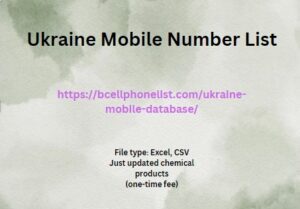Post by arfanho7 on Feb 25, 2024 4:28:41 GMT
One explanation for this result may be that subjects assumed that those who chose not to answer were engaging in bad behavior even more often than frequently — that is they inferred an extra answer of very frequently. When the researchers tested this possibility by asking participants to guess how often they thought the hiders did those things however they chose on average somewhere between sometimes and frequently meaning they assumed that they engaged in bad behavior less than the partner who did it frequently yet they still chose the other partner.
I thought this was a false positive at first admits John. But we replicated it many many times. I was shocked. p studies the researchers determined that the explanation may come down Ukraine Mobile Number List to one word trust. Honesty The Best Policy In one experiment for example the researchers had participants play a game in which a person is given an amount of money and then must decide how much of the money to give to a partner. Every dollar participants give is tripled. However it is the partner who decides how much to give back to them none some or all.

Thus the amount of money participants give is heavily determined by how much they trust their partners. When shown profile questionnaires filled out by their partners who had been induced to either answer the questions or leave them blank participants routinely gave less money to those who had chosen not to answer the questions even compared to those who said they frequently tried to gain access to another person s email account for instance or faked a sick day at work.
I thought this was a false positive at first admits John. But we replicated it many many times. I was shocked. p studies the researchers determined that the explanation may come down Ukraine Mobile Number List to one word trust. Honesty The Best Policy In one experiment for example the researchers had participants play a game in which a person is given an amount of money and then must decide how much of the money to give to a partner. Every dollar participants give is tripled. However it is the partner who decides how much to give back to them none some or all.

Thus the amount of money participants give is heavily determined by how much they trust their partners. When shown profile questionnaires filled out by their partners who had been induced to either answer the questions or leave them blank participants routinely gave less money to those who had chosen not to answer the questions even compared to those who said they frequently tried to gain access to another person s email account for instance or faked a sick day at work.
